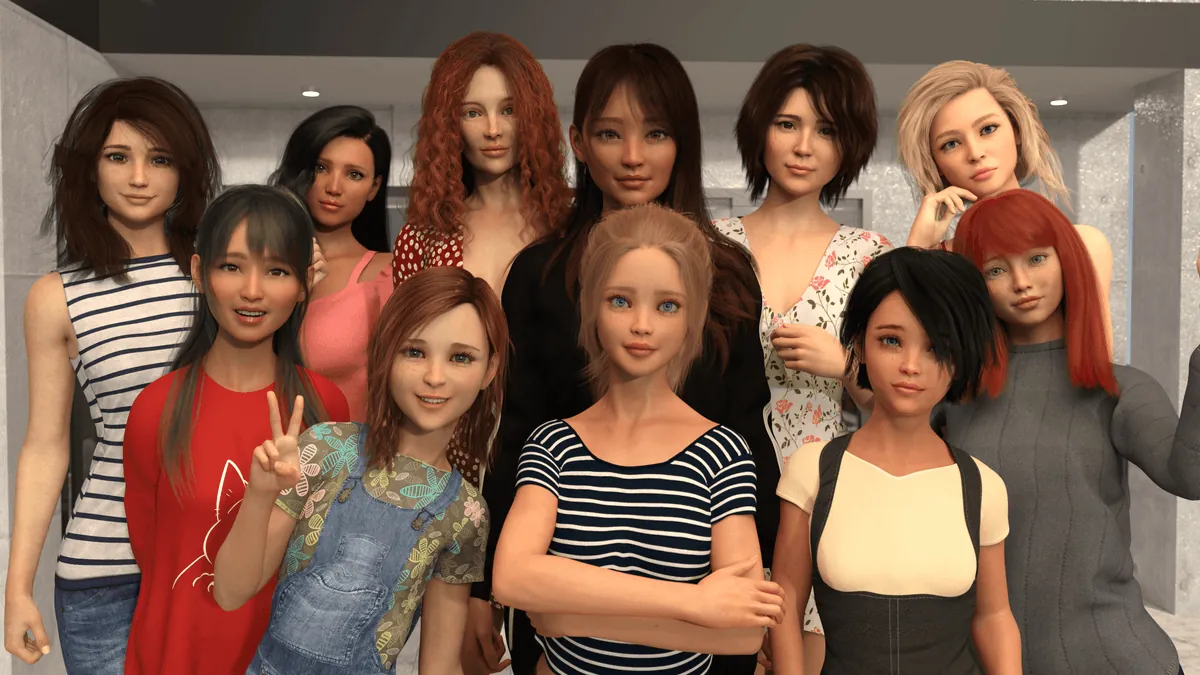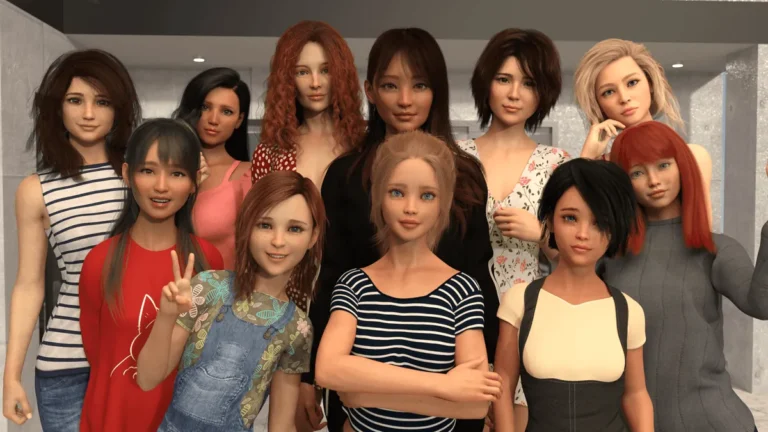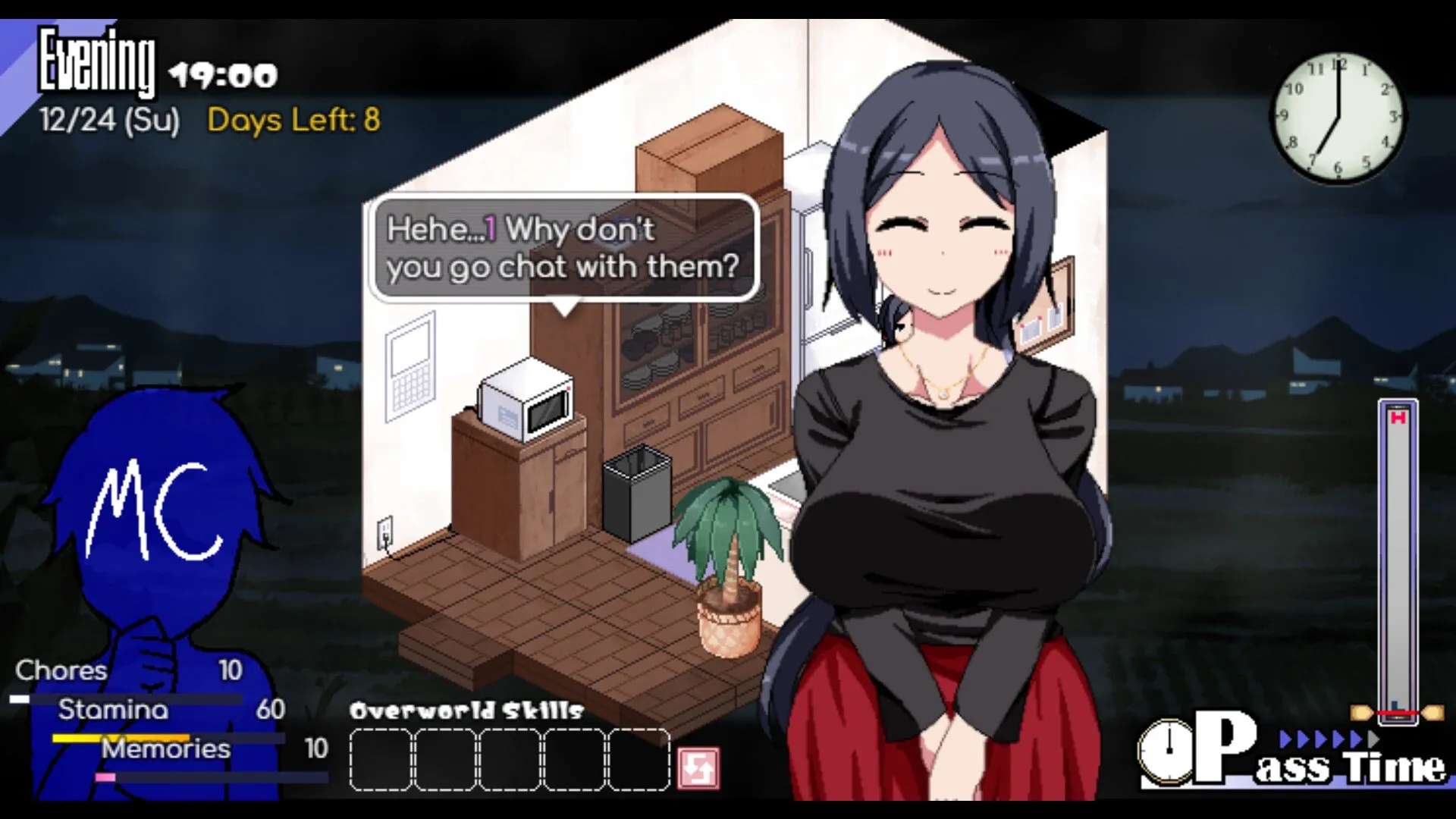
Play My New Memories
My New Memories review
A comprehensive guide to the story-driven visual novel experience
My New Memories stands out as a narrative-focused visual novel that combines compelling storytelling with interactive gameplay. The game follows a male protagonist who awakens in a hospital with complete amnesia after a devastating car accident, only to discover his wife has fallen into a coma. Through dream sequences and family interactions, players gradually uncover forgotten memories while making choices that shape their relationships and moral journey. This guide explores what makes My New Memories a unique experience in the visual novel genre, from its high-quality visuals to its emotionally engaging narrative that prioritizes story over other elements.
Understanding My New Memories: Plot, Setting & Character Development
The Core Narrative: Memory Loss and Family Reconnection
Let me tell you about a game that genuinely moved me. I started playing My New Memories expecting a standard visual novel experience, but what I found was a deeply emotional journey that stuck with me long after the credits rolled. 🎮 The My New Memories story begins with a premise we’ve seen in films but rarely explored with such intimacy in games: a devastating car accident. You wake up in a sterile hospital room, your mind a complete blank. The doctors tell you your name, but the person they’re referring to feels like a stranger. This powerful memory loss storyline is the foundation of one of the most compelling story-driven visual novel experiences I’ve ever had.
The genius of this visual novel narrative is how it puts you directly in the shoes of the protagonist. You don’t just watch a man struggle with amnesia; you are that man, grappling with the terrifying reality of not recognizing your own children or the life you supposedly built. I remember one early scene where your daughter runs into the hospital room, her face lit up with relief and love, and your character can only offer a blank, confused stare. The emotional weight in that moment is palpable, and it perfectly sets the stage for the journey of reconnection that follows. 💔
But here’s where the My New Memories story takes a fascinating turn. While your physical wife lies in a coma in another room of the same hospital, she appears to you in vivid, ethereal dreams. These aren’t just flashbacks or simple cutscenes; they’re interactive moments where you can communicate with this spectral version of her. This unique mechanic is the heart of the game’s visual novel narrative, creating a beautiful and heartbreaking paradox. The person who should be helping you the most with your memory is physically unavailable, yet she becomes your primary guide through the fragments of your past. It’s a brilliant narrative device that constantly tugs at your heartstrings. ✨
Your family members—your two children and your sister—become your anchors to reality. They each have their own ways of helping you, from showing you old photo albums to retelling stories about family vacations. The way the game handles this family reconnection process feels authentic and never forced. It’s not about magically regaining your memories through a single dramatic moment, but about the slow, sometimes painful process of rebuilding relationships from the ground up. The character development game aspects shine here, as you see how each family member is coping with this dual tragedy in their own way.
“The most powerful moments in gaming aren’t always about saving the world. Sometimes, they’re about a father remembering his daughter’s favorite song.”
What truly elevates this story-driven visual novel is how your interactive fiction choices directly shape the recovery process. Do you push your children away because their familiarity is overwhelming? Or do you embrace their attempts to connect, even when it feels like you’re interacting with strangers? I found myself pausing frequently, genuinely weighing the emotional consequences of my dialogue selections. This isn’t a game about good or bad endings; it’s about finding your own path through an unimaginable situation. 🛤️
Character Interactions and Relationship Building
The soul of any great story-driven visual novel lies in its characters, and My New Memories delivers an unforgettable cast that feels remarkably real. The relationship system here is sophisticated yet intuitive, making this a standout character development game. Every conversation, every shared memory, and every choice you make influences your bonds with the people who matter most. I was particularly impressed by how the game tracks these relationships not with simple meters, but through subtle changes in dialogue, character expressions, and available story paths.
Your daughter, Sarah, is perhaps the most emotionally complex relationship to navigate. As a teenager, she’s already dealing with all the typical struggles of her age, compounded by the trauma of nearly losing both parents. I remember one conversation where she tentatively asks if you remember teaching her to ride a bike. Your response—whether you pretend to remember to comfort her or honestly admit the memory is gone—creates a ripple effect that changes how she interacts with you for the rest of the game. These relationship building mechanics are woven so naturally into the visual novel narrative that you feel the weight of every decision. 🚲
Then there’s your son, Liam, who copes by burying himself in schoolwork and sports. He presents a strong, independent front, but through your interactive fiction choices, you can gradually peel back those layers to discover his fears and vulnerabilities. The game does an exceptional job of showing how children process grief differently, and your role as a parent—even one who can’t remember being a parent—becomes about recognizing and responding to these nuanced emotional needs.
The table below outlines the main characters you’ll form bonds with throughout the My New Memories story:
| Character | Relationship to Protagonist | Role in the Story |
|---|---|---|
| Anna (Wife) | Spouse | Appears in dreams as a guide; the emotional core of the memory recovery journey |
| Sarah | Daughter (Age 16) | Struggles with teenage identity while desperately seeking connection with her father |
| Liam | Son (Age 12) | Uses activities as emotional shields; represents the quiet pain of the family |
| Maya | Sister | Practical caretaker who bridges the protagonist’s past and present |
Your sister Maya serves as the practical anchor, handling medical decisions and daily logistics while you recover. Her perspective is crucial because she knew you before the accident, offering glimpses into your former personality that might surprise you. Through Maya, the game explores the fascinating question: if you can’t remember the person you were, can you become someone better? Or are our core traits immutable, regardless of our memories? These philosophical underpinnings elevate the My New Memories story beyond simple family drama into something much more profound. 🤔
The relationship building mechanics extend beyond dialogue choices to include activities and memory triggers. You might decide to help Liam with his homework, listen to Sarah’s band practice, or look through family photos with Maya. Each of these interactions opens up new conversational pathways and slowly fills in the puzzle pieces of your former life. What’s remarkable is how these mechanics never feel like a checklist; they’re organic moments that naturally emerge from the visual novel narrative. I never felt like I was “grinding” relationship points—I was simply being present with characters I genuinely cared about. ❤️
Visual Quality and Artistic Direction
From the moment I launched My New Memories, I was struck by its visual elegance. 🎨 This isn’t just another story-driven visual novel with generic assets; it’s a carefully crafted artistic experience where every background, character expression, and animation serves the emotional narrative. The developers have understood a fundamental truth: in a medium where storytelling is paramount, visual presentation isn’t just decoration—it’s an essential storytelling tool. The high-quality images and subtle animations work in harmony to create an immersive world that feels both familiar and dreamlike.
The character designs deserve special praise for their emotional expressiveness. In many visual novels, character sprites might cycle through a handful of standard expressions, but here, the facial animations are remarkably nuanced. I noticed during one particularly emotional scene with Sarah, her expression subtly shifted through six or seven micro-emotions—hope, disappointment, understanding, resignation—all within a single conversation. This attention to detail in the character development game aspects makes the cast feel alive and deeply human. The artists have mastered the difficult task of creating characters who are attractive enough to be engaging but realistic enough to be believable as ordinary people in extraordinary circumstances. 👨👩👧👦
The game employs a dual visual approach that perfectly complements its narrative structure. The “real world” scenes are rendered in warm, slightly desaturated colors that evoke both nostalgia and loss, while the dream sequences with your wife are bathed in ethereal blues and soft glows, creating a magical realism effect. This visual distinction isn’t just aesthetically pleasing; it helps players intuitively understand when they’re in objective reality versus subjective dreamspace. The visual novel narrative uses these aesthetic choices to reinforce its themes of memory, perception, and the blurred lines between dreams and reality.
“The dream sequences in My New Memories are some of the most beautifully rendered moments I’ve experienced in interactive fiction.”
Background art is another area where this story-driven visual novel excels. Rather than using generic locations, each environment feels specifically designed to support the story’s emotional beats. The hospital room evolves throughout the game, with flowers, cards, and personal items gradually appearing as your family tries to make the sterile space feel more like home. Your actual house is filled with visual storytelling—family photos on the walls, childhood drawings stuck to the refrigerator, the specific wear patterns on furniture that suggest years of family life. These environmental details do more than just set the scene; they become silent characters in the My New Memories story, representing the life you’ve forgotten but are slowly rediscovering. 🏡
The interface and typography choices further enhance the experience. Text appears with a gentle fade-in effect that matches the game’s contemplative pace, and important dialogue is sometimes highlighted with slight color variations that draw your attention without being disruptive. During my playthrough, I appreciated how the game occasionally incorporates visual novel-style “CG moments”—beautifully illustrated full-screen images that capture significant emotional turning points. These serve as visual anchors in your memory of the story, much like how our brains preserve certain vivid memories while others fade.
Perhaps most impressively, the game achieves all this visual sophistication while maintaining complete focus on its narrative strengths. This is a story-driven visual novel in the purest sense—the visuals serve the story, never distracting from it. There’s a remarkable consistency to the artistic direction that tells you every visual element was considered, tested, and refined to support the player’s emotional journey. From the way light filters through hospital blinds to the particular shade of blue used in the dream sequences, everything feels intentional and meaningful. 🌟
The replay value is significantly enhanced by the branching visual novel narrative paths determined by your interactive fiction choices. During my first playthrough, I focused on rebuilding my relationship with Sarah, which opened up story branches I wouldn’t have discovered otherwise. On subsequent playthroughs, I prioritized different relationships and was amazed by how much additional content and character development I uncovered. The game masterfully maintains narrative tension throughout its approximately three-hour runtime, ensuring that even on repeated playthroughs, emotional moments retain their power while revealing new layers of meaning based on your evolving understanding of the characters and their relationships.
My New Memories delivers a compelling experience for players seeking a narrative-rich visual novel with meaningful choices and emotional depth. The game’s strength lies in its professional writing, high-quality visuals, and ability to create genuine emotional investment in characters within a relatively short timeframe. Whether you’re drawn to story-driven games, character-focused narratives, or interactive fiction that respects player agency, My New Memories offers a unique journey of self-discovery and relationship building. The combination of no game overs, multiple choice paths, and approximately three hours of engaging content makes it an excellent choice for both newcomers to visual novels and seasoned fans of the genre. If you’re ready to embark on this memorable adventure, follow the installation guide provided and prepare yourself for an emotionally resonant experience that will likely inspire multiple playthroughs to explore different relationship outcomes.












